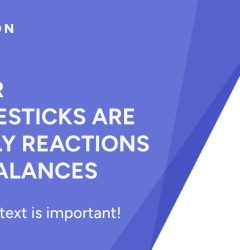08 Apr

Stock markets across Europe have had a strong sell-off for over two consecutive months, with the DAX 30 index dropping almost 40% since last December 2019. This strong sell-off has affected most German stocks in the German Dax 30 index, across the European market floors, and in all sectors and industries. The spread of the coronavirus is killing thousands of people across the German region, prompting the German government and all European governments to increase lockdown measures.
DAX Index supply and demand
The DAX Index is the benchmark index for the German equity market. It tracks the performance of 30 selected German blue chip stocks traded on the Frankfurt Stock Exchange, representing around 80 per cent of the market capitalization listed in Germany. The Index is free floating and has a base value of 1000 as of December 31, 1987.
The question is, should we buy or sell German Dax 30 stocks? Watch the supply and demand analysis for the German Dax index and several german stocks in the video below.
After a strong sell-off, we should expect a bigger retracement. Unsustainable moves in German stocks price cannot be sustained for a long time; a bigger correction must happen. It usually happens. It’s how the market works. In the video below, we do a long-term analysis of several German stocks like Adidas (ADS), Bayer (BAYN), Daimler Mercedes (DAI), Deutsche Bank (DBK), Lufthansa (LHA), Tui Tour Operator (TUI1) and Volkswagen (VOW). All of them show strong bearish impulses and imbalances.
German Stock Analysis
The stocks and the German index are expected to start rallying soon, providing great opportunities for longs on many stocks since these stocks are now a bargain, too cheap! Many investors will pile thousands of shares of stocks up, given that price is pretty low. That’s supply and demand playing out. It’s always the same thing; market history repeats itself.
German DAX 30 price action analysis
This is the kind of price action technical analysis you will learn in our trading community. You will learn how to locate new supply and demand imbalances and trade without using any indicators, no news, no fundamental analysis, no earnings announcements, no volume or VSA analysis. Just supply and demand imbalances.
Trading Dax 30 stocks supply and demand imbalances are ideal for beginners and those with full or half-time jobs. You won’t need to stay in front of the computer all day long trying to move price action with your mind.
Supply and Demand price action
As supply and demand traders, we do not need to pay attention to the news, fundamentals or any earnings reports. Once a big timeframe imbalance has gained control, earnings do just the opposite and react strongly to those imbalances. Why do you see positive earnings, then the underlying stock drops like a rock, or a negative earnings announcement and the stock rallies like a rocket out of control? You are probably missing the fact that there are big imbalances in gaining control.
Unless you are doing very short-term trading and scalping, you should not worry about fundamentals or earnings announcements on German DAX 30 stocks.
You can use these imbalances to plan your trades in lower timeframes. Trading is just waiting for the right trigger points and scenarios to present themselves, this game has got a name and it’s called the waiting game. We need to patiently wait for the correct scenarios and setups to happen and wait for the price to pull back or dip into the price levels we want to trade, in our case these price levels are made of supply and demand imbalances.
Join our supply and demand stock trading course if you want to learn how to trade using our supply and demand trading strategy.
There are several ways of buying stocks and futures. When trading stocks, you can buy shares of the underlying stock or use options strategies to go long or short at these specific supply and demand levels, long calls or long puts or spreads. You can even buy a CFD (contracts for difference) if you are in a country where it’s allowed.









